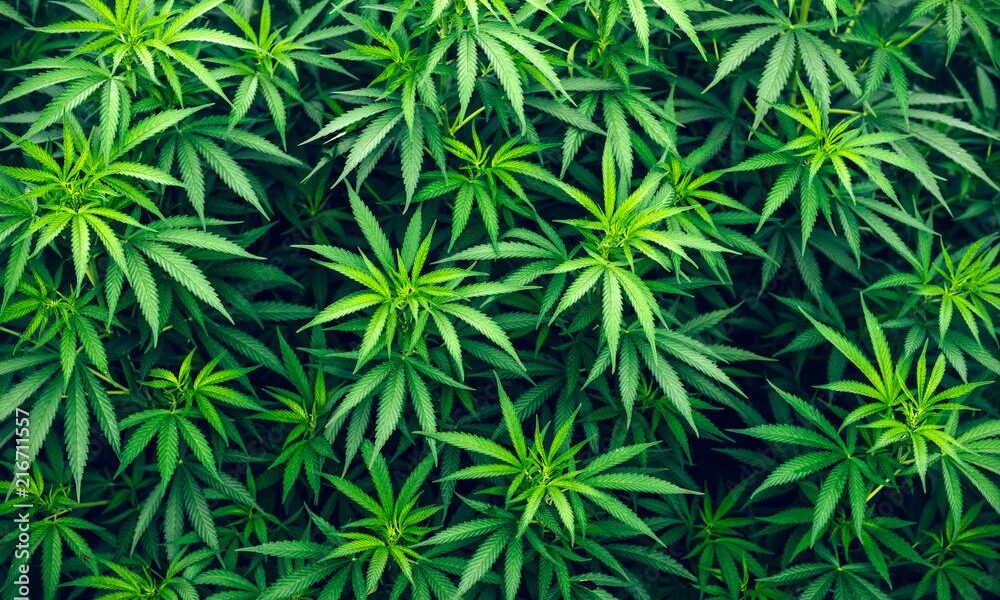Title: “Weed or Wonder? Understanding the Drug Debate”
In the realm of discussions surrounding substance use, few topics ignite as much curiosity and controversy as cannabis—commonly known as weed. As societies evolve and perspectives shift, the classification of cannabis often stirs emotional responses and polarized views. Some herald its therapeutic benefits, praising its prowess in alleviating pain and anxiety, while others warn of its potential dangers, linking it to a myriad of health risks and a spectrum of social issues. The question at hand—“Is weed considered a drug?”—may seem straightforward, yet it opens the door to a more profound exploration of definition, legality, perception, and impact on society. In this article, we will unravel the multifaceted nature of cannabis, examining its status within the broader context of drug categorization and the complexities that surround this often-misunderstood plant. Join us as we navigate the intricate landscape of cannabis, where science meets culture, and legality dances with personal choice.
Table of Contents
- Understanding Cannabis: A Comprehensive Overview of Its Classification
- The Science Behind Cannabis: Active Compounds and Their Effects
- Cultural Perspectives on Cannabis: Societal Attitudes and Legal Implications
- Navigating the Debate: Responsible Use and Harm Reduction Strategies
- Q&A
- Insights and Conclusions
Understanding Cannabis: A Comprehensive Overview of Its Classification
Cannabis is classified into three main species: Cannabis sativa, Cannabis indica, and Cannabis ruderalis. Each species exhibits unique characteristics in terms of growth patterns, chemical composition, and effects. Sativa is typically known for its uplifting and energetic effects, making it a popular choice during daytime use. Indica, on the other hand, is favored for its relaxing and sedative properties, often used in the evening or for relieving stress. Ruderalis, though less well-known, is recognized for its auto-flowering capability and is often bred with sativa or indica strains to enhance desirable traits.
In addition to species classification, cannabis can also be categorized based on its chemical constituents, primarily cannabinoids and terpenes. The most prominent cannabinoid, tetrahydrocannabinol (THC), is mainly responsible for the psychoactive effects commonly associated with cannabis use. Conversely, cannabidiol (CBD) has gained attention for its therapeutic potential without the mind-altering effects. Terpenes contribute not only to the aroma and flavor of cannabis but also influence its effects, creating a complex interplay that affects the overall experience. Understanding these classifications requires delving deeper into both the biological aspects and the societal perceptions surrounding cannabis as a substance.
| Species | Common Effects | Typical Uses |
|---|---|---|
| Cannabis sativa | Uplifting, Energetic | Daytime Use, Creativity |
| Cannabis indica | Relaxing, Sedative | Evening Use, Stress Relief |
| Cannabis ruderalis | Auto-flowering, Low THC | Hybrid Breeding |
The Science Behind Cannabis: Active Compounds and Their Effects
Cannabis is a complex plant that contains numerous compounds, but the two most well-known active ingredients are tetrahydrocannabinol (THC) and cannabidiol (CBD). THC is the psychoactive component responsible for the “high” that many associate with marijuana use. It interacts with the brain’s endocannabinoid system by binding to cannabinoid receptors, primarily CB1 receptors. This interaction can lead to a variety of effects, including euphoria, relaxation, altered sensory perception, and increased appetite. In contrast, CBD is non-psychoactive and is often touted for its therapeutic potential. It does not produce a high but may help reduce anxiety, inflammation, and chronic pain, making it popular for medical use.
Beyond THC and CBD, cannabis comprises over hundred other cannabinoids and terpenes, which contribute to the plant’s diverse effects and aromas. Other notable cannabinoids include cannabinol (CBN), known for its sedative properties, and cannabigerol (CBG), which is believed to provide neuroprotective benefits. Terpenes, such as myrcene and limonene, offer additional therapeutic potential and can influence the overall experience of using cannabis due to their unique scent profiles and effects. The combination of these compounds creates a phenomenon known as the “entourage effect,” where various elements work synergistically, enhancing the overall impact of the plant. This complexity is part of what makes cannabis a subject of scientific intrigue and natural wonder.
Cultural Perspectives on Cannabis: Societal Attitudes and Legal Implications
Exploring the multifaceted views on cannabis reveals a complex interplay between societal attitudes and legal frameworks. In various cultures, cannabis is approached through different lenses, which can be broadly categorized into the following perspectives:
- Medicinal Use: Many cultures recognize cannabis for its therapeutic properties, contributing to a growing acceptance of medical marijuana.
- Recreational Attitudes: Social acceptability varies, with some societies embracing it as a legitimate recreational substance while others stigmatize its use.
- Historical Context: Historical beliefs regarding cannabis often inform current perceptions, with some societies viewing it as an integral part of cultural practices.
The legal implications of cannabis consumption are equally diverse, heavily influenced by these societal attitudes. Across the globe, legislation can range from outright prohibition to full legalization, often reflecting the following trends:
| Region | Legal Status | Key Factors |
|---|---|---|
| North America | Varied (Legal in several states) | Public opinion shift, medical research |
| Europe | Mixed (Decriminalized in some areas) | Harm reduction policies, tourism |
| Asia | Generally prohibited | Cultural stigma, historical bans |
Navigating the Debate: Responsible Use and Harm Reduction Strategies
As society grapples with the classification of cannabis, it becomes essential to approach the discussion with a lens of responsibility and safety. While many acknowledge cannabis as a drug, its use and effects can vary significantly, warranting the need for informed conversations surrounding dosage, frequency, and individual health conditions. Implementing harm reduction strategies can help users make safer choices. Key points to consider include:
- Education: Providing accurate information about potency, effects, and potential health risks.
- Dosing: Encouraging users to start with small amounts to understand their own reactions.
- Awareness of Context: Acknowledging the influence of environment and mental state on the experience.
The adoption of responsible use protocols can mitigate negative outcomes associated with cannabis consumption, paving the way for more nuanced perspectives. Establishing guidelines can empower users with knowledge while respecting the diversity of experiences. For example, a simple framework might look like the following:
| Strategy | Description |
|---|---|
| Peer Support | Creating community groups for shared experiences and advice. |
| Mindful Use | Encouraging users to reflect on their usage patterns and effects. |
| Health Monitoring | Promoting regular check-ups to assess any health impacts. |
Q&A
Q&A: Is Weed Considered a Drug?
Q: What exactly is weed?
A: Weed, also known as marijuana or cannabis, is a plant that contains active compounds called cannabinoids, the most notable being THC (tetrahydrocannabinol) and CBD (cannabidiol). These compounds interact with the body’s endocannabinoid system, influencing various physical and mental processes.
Q: Why do some people argue that weed is a drug?
A: A drug is commonly defined as a substance that alters physiological functions when consumed. Given that weed contains THC, which can affect mood, perception, and cognitive functions, it meets the criteria of a drug in many contexts. For advocates of this view, the psychoactive effects of weed cannot be ignored.
Q: Are there scientific classifications that define weed as a drug?
A: Yes, various institutions, including the World Health Organization (WHO) and the National Institute on Drug Abuse (NIDA), classify marijuana as a drug due to its psychoactive effects and potential for misuse. It’s listed in schedules of controlled substances in several jurisdictions, highlighting its recognition as a controlled drug.
Q: How do medical and recreational uses of weed factor into this debate?
A: The medical use of weed for conditions like chronic pain, anxiety, and epilepsy adds complexity to the discussion. Proponents argue that when used responsibly and under medical supervision, it serves therapeutic purposes rather than merely being a recreational drug. Conversely, recreational use often involves consumption in social settings, raising concerns about abuse and addiction.
Q: Are there any legal considerations?
A: The legal status of weed varies significantly around the world. In places where it’s legal for medicinal or recreational use, it may not carry the same stigma as a “hard drug.” However, in regions where it remains illegal, it’s often classified alongside substances like cocaine and heroin, reinforcing its identity as a drug with potential hazards.
Q: What about the perception of weed in society?
A: Societal views on weed are changing. Where once it was largely stigmatized, ongoing legalization efforts and extensive research into its benefits are reshaping its image. Some view it as a natural therapy, while others remain skeptical, highlighting inherent risks. This duality fuels the debate about whether it should be classified strictly as a drug.
Q: can weed unequivocally be considered a drug?
A: The answer may depend on context. From a scientific and legal perspective, yes, weed can generally be classified as a drug due to its effects and potential for misuse. Yet, cultural perceptions, legal status, and uses complicate a one-size-fits-all answer. As society continues to evolve in its understanding of cannabis, the discussion will likely remain nuanced and multifaceted.
—
Final Thought: Regardless of classification, awareness and education around weed as a substance—its effects, risks, and benefits—are essential for informed discussion and decision-making in society.
Insights and Conclusions
As we draw the curtain on our exploration of whether weed is considered a drug, it becomes clear that the definition of “drug” can be as nuanced as the experiences surrounding cannabis itself. From its historical roots and cultural significance to its evolving legal status and medicinal potential, the conversation surrounding marijuana is rich and multifaceted.
Ultimately, whether you view weed as a drug or something more depends on your perspective—be it medical, legal, or personal. As society continues to navigate the complex landscape of cannabis, it invites us all to consider our own definitions and beliefs. So, whether you see it as a tool for healing, a recreational option, or simply part of a larger conversation about substance use, the importance lies in fostering understanding and dialogue. In this ever-changing narrative, one thing remains certain: the discussion on cannabis is far from over. Thank you for joining us on this journey, and we encourage you to keep questioning, learning, and engaging in the conversation.


